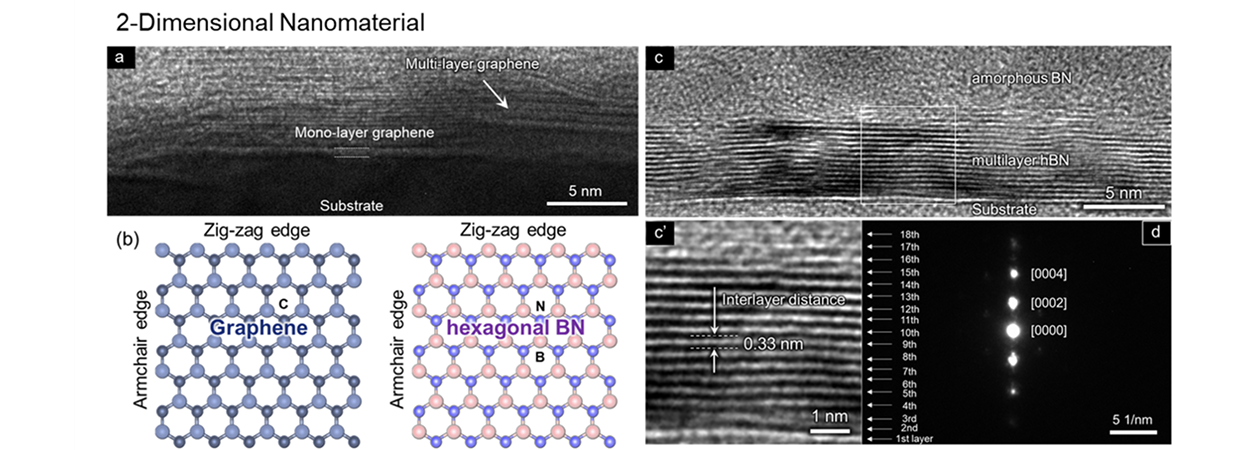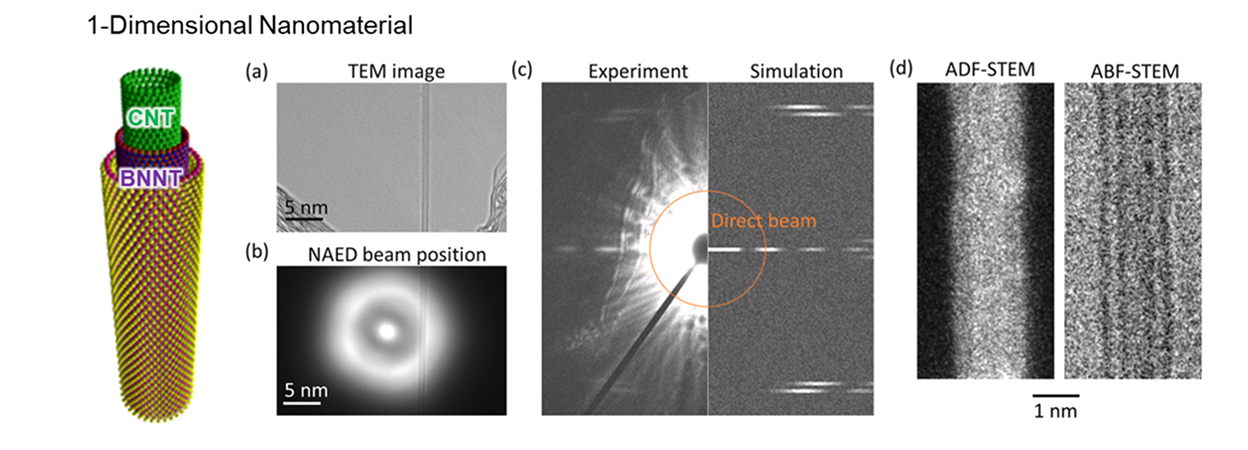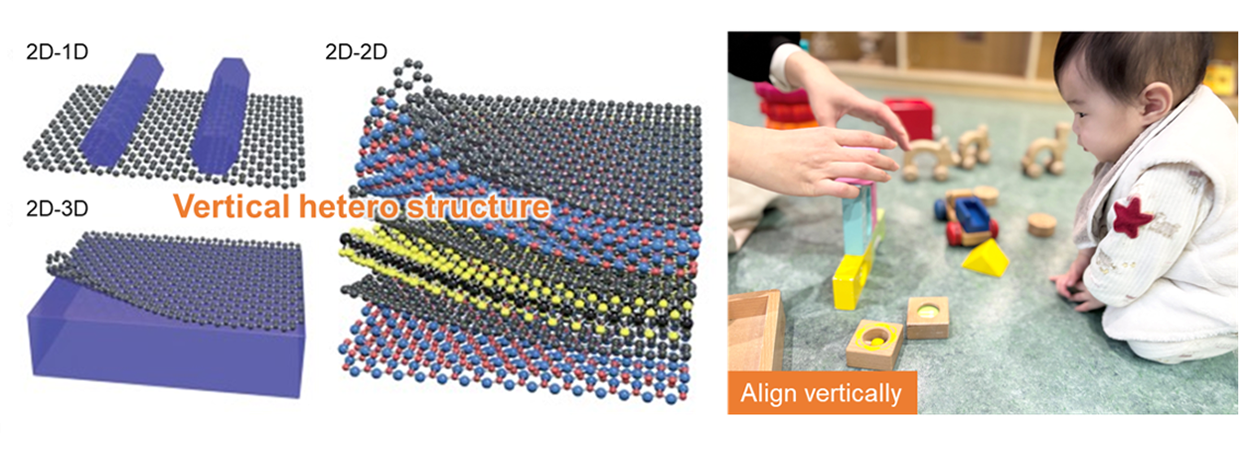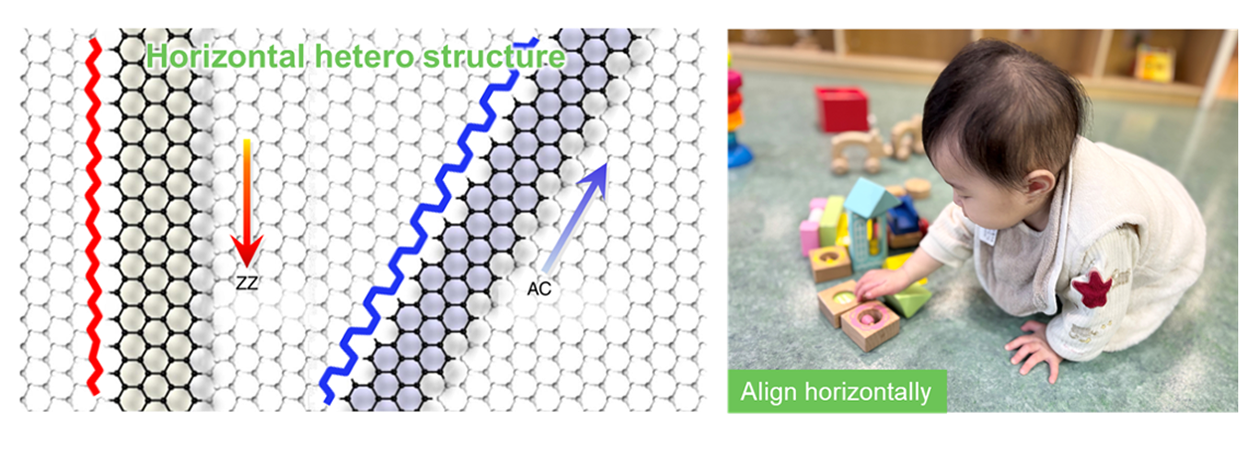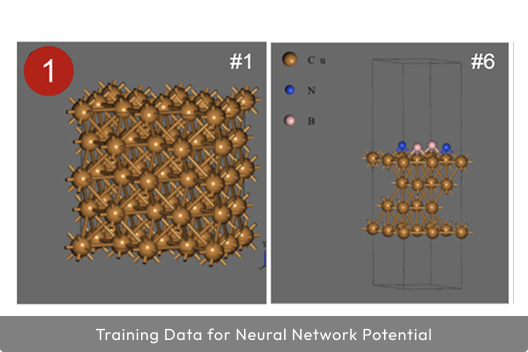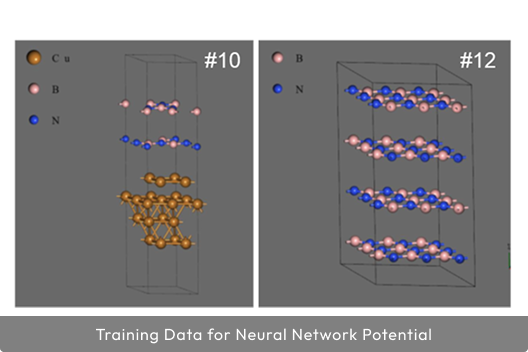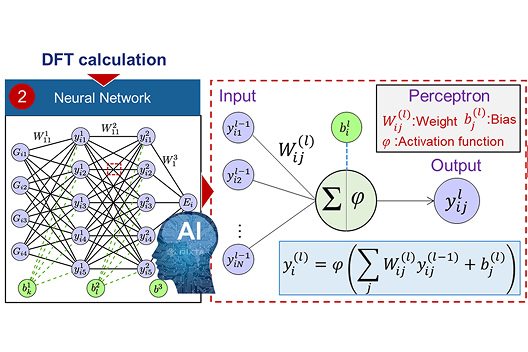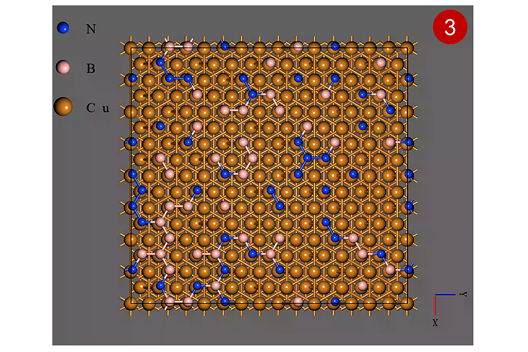
What we research
Ultimate Surface Creation by Manipulating
and Constructing with Atoms
- Diamonk-Like Carbon (DLC)
- Low-dimensional nanomaterial
- van der Waals Heterostructure (vdWH)
- Materials
- Infomatics
- AI
- TSUBAME4.0
Innovative Surface Modification Technologies Enabled by Nanomaterials
Nanomaterials such as diamond-like carbon (DLC), carbon nanotubes, and graphene exhibit unique and outstanding properties not found in conventional materials. By precisely controlling the structure of these nanomaterials at the atomic level and adjusting their properties, it becomes possible to create 'surfaces that are designed at the atomic scale and whose properties are defined at the nanoscale,' or in other words, 'the ultimate surface.' Surface modification technologies using these nanomaterials are expected to fundamentally transform the design of next-generation functional surfaces and bring innovations across a wide range of fields.
Point
Material Informatics
This research aims to precisely control the structure and properties of nanomaterials to create 'the ultimate surface.' To achieve this, we will utilize AI simulations, including machine learning, to accelerate material design at the nanoscale. By combining large-scale data analysis through AI with first-principles calculations, we will predict optimal atomic arrangements and process conditions, establishing innovative surface modification technologies to freely adjust the properties of nanomaterials.
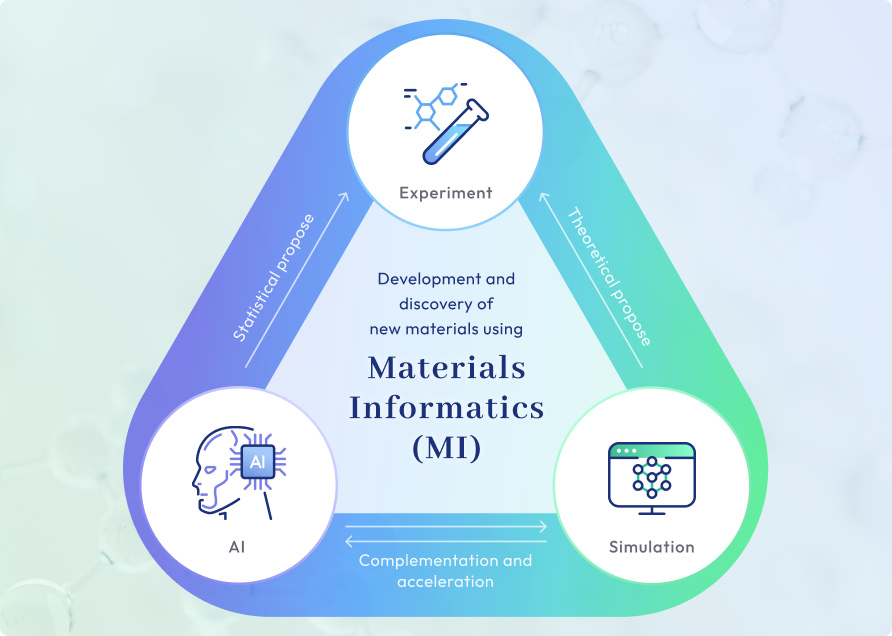

Ultimate surface creation by manipulating and
building with atoms
-
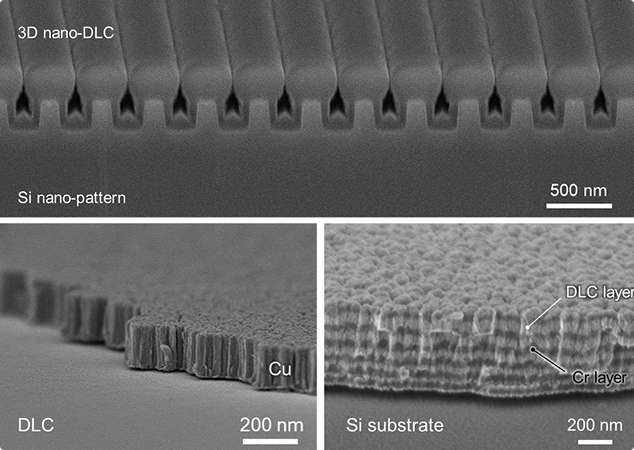
(01)
Diamond-Like Carbon Film
Diamond-like carbon (DLC) films are a general term for amorphous hard carbon films that have an intermediate structure between diamond and graphite. They are known for their excellent durability, wear resistance, low friction, chemical stability, and biocompatibility, making them promising for applications in various fields.
-
(02)
Low-Dimensional Material
Low-dimensional nanomaterials are new materials that have thicknesses and widths on the atomic scale, exhibiting properties distinct from those of conventional materials such as metals and plastics (3D materials). For example, carbon nanotubes (CNTs) have an elongated 1D structure, making them lightweight, strong, and highly conductive. Graphene is a 2D material that is only one atomic layer thick and exhibits exceptional conductivity, surpassing that of copper. These low-dimensional materials are attracting attention as key materials driving innovations in electronics and energy technologies.
-
(03)
van der Waals Heterostructure (vdWH)
Van der Waals heterostructures are new composites formed by stacking or bonding different nanomaterials, where the combination of layers and stacking angles allows for the control of electrical and optical properties. These structures are held together by van der Waals forces, which preserve the properties of each individual layer while enabling the creation of new functionalities. In our laboratory, we are pioneering the creation of heterostructures that combine not only 2D materials such as graphene and hexagonal boron nitride (hBN), but also 1D materials like carbon nanotubes and boron nitride nanotubes (BNNT), as well as 3D materials like diamond-like carbon (DLC), pushing the boundaries of dimensional van der Waals heterostructures.
- About the 1st Figure
-
Referenced from Nature materials 2020, 20, 202-207
Hui Shan Wang, Lingxiu Chen, Kenan Elibol, Li He, Haomin Wang, Chen Chen, Chengxin Jiang, Chen Li, Tianru Wu, Chun Xiao Cong, Timothy J.
Pennycook, Giacomo Argentero, Daoli Zhang, Kenji Watanabe, Takashi Taniguchi, Wenya Wei, Qinghong Yuan, Jannik C. Meyer and Xiaoming Xie "Towards chirality control of graphene nanoribbons embedded in hexagonal boron nitride"
- About the 3rd Figure
-
Referenced from Nature Reviews materials 2016, 1, 16042
Yuan Liu, Nathan O. Weiss, Xidong Duan, Hung-Chieh Cheng, Yu Huang & Xiangfeng Duan "Van der Waals heterostructures and devices"
-
(04)
Materials Informatics
We aim to explore unprecedented nanomaterials with innovative properties by leveraging materials informatics, which integrates theoretical computational science and data science, to unravel the "complex underlying physics at vdWH interfaces" and evaluate their physical properties. Additionally, we seek to elucidate the growth mechanism of vdWH by deriving an optimal Neural Network potential through machine learning simulations that incorporate molecular dynamics calculations into first-principles calculations. The computations will be performed using TSUBAME4.0, housed at the Suzukakedai Campus, which boasts computational speed second only to Fugaku among domestic supercomputers in terms of precision.




We provide information about the activities of our laboratory and recruitment opportunities for students.
If you are interested, please feel free to take a look.
